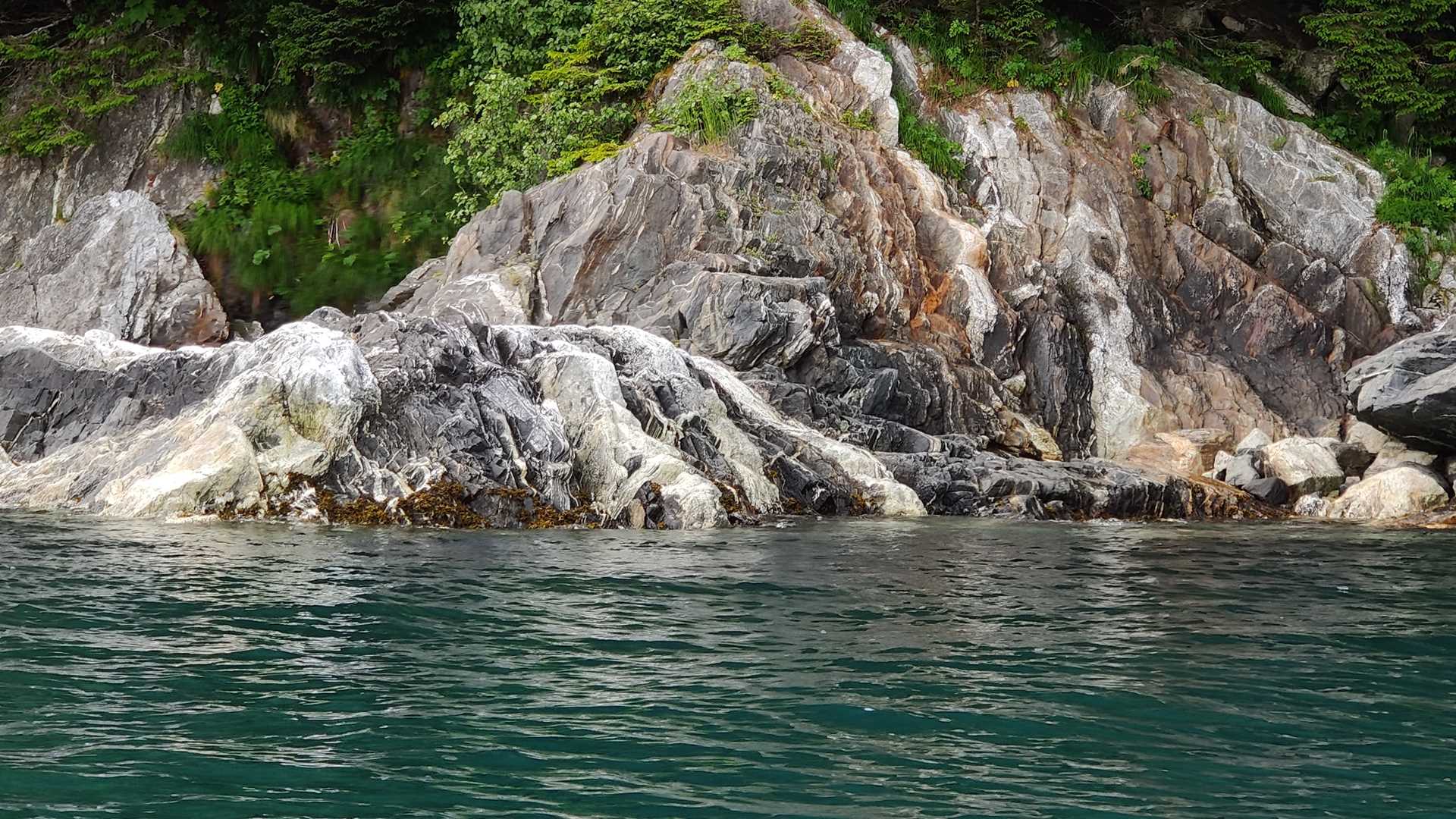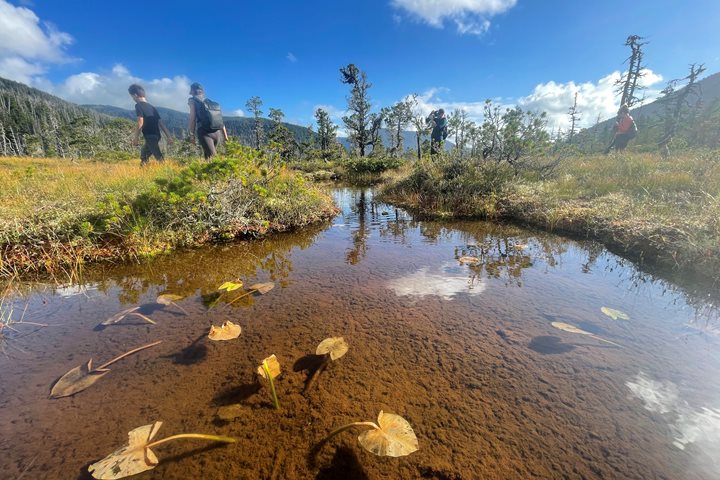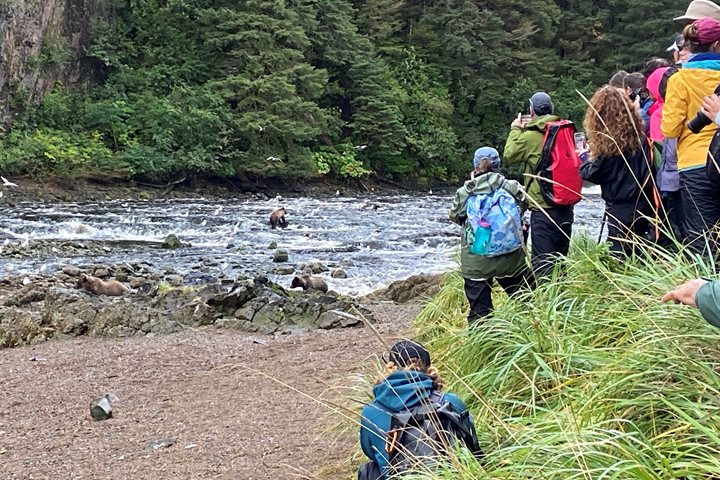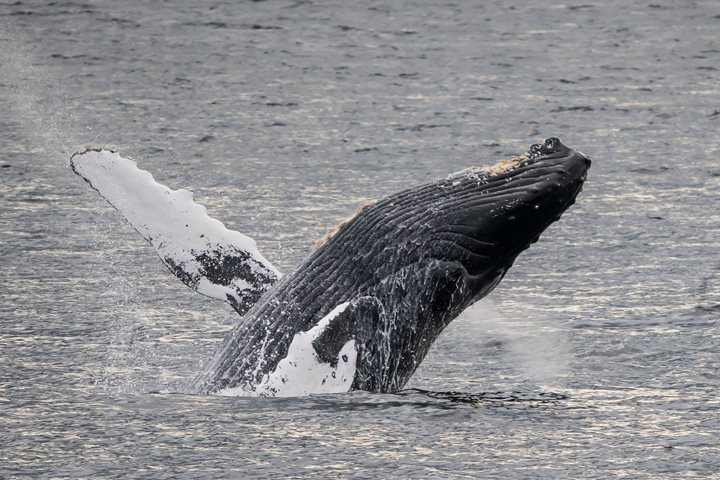By breakfast time, National Geographic Quest had reached Cross Sound and found a safe anchorage amongst the Inian Islands near the north coast of Chichagof Island. These islands are located at the north entrance to the famous Alaska Inland Passage, which means we were right at the edge of the Gulf of Alaska.
The North Pacific is famous for its stormy seas, but fortunately, the seas were calm this morning and we offered Zodiac cruises to enjoy the natural history of the area. Although most of the islands are completely covered with dense vegetation, in some places by the water’s edge some of the geology could be seen. This bedrock, though smoothed and rounded by past glaciation like what we have seen elsewhere, is totally different in design and formation. It appears to be metamorphosed and foliated, with some layers of deposition now oriented 90 degrees to how they were laid down.
The marine richness became quickly obvious as we encountered some incredibly appealing sea otters within the kelp beds, including mothers swimming at the surface with pups on their chests. Where do these creatures rate on the international Cuteness Scale?
Our explorations took us around the lush, forest-covered islands and we marveled at the many bald eagles perched in the trees along the shorelines. The main reason for this venture, however, was our hope to observe northern, or Steller’s, sea lions out near the opening to the Gulf of Alaska. In this, we were successful. Dozens of sea lions were observed hauled out on seaside rocks, while others were swimming and cavorting in the currents, upwellings, and whirlpools caused by the strong incoming tide. Many sea lions even approached our Zodiacs as we drifted with the currents. This tidal phenomenon is undoubtedly the reason behind the presence of so many predators in this vicinity. We even observed a couple sea lions catching fish.
During lunch, our vessel moved a short distance to Idaho Inlet, where we spent the rest of the afternoon anchored just off Fox Creek. We went ashore to explore the lush, verdant temperate rain forest area on foot. The hikers were treated to an amazing phenomenon when we found a short stretch of an ancient bear trail consisting of footprints that have been sustained for many generations as bears step on top of each other’s foot falls.
There was much more to still come. In the early evening, we encountered a small pod of killer whales—four to be exact. We identified them as ”‘transient” killer whales as they passed close to our vessel. Photos of their fins and body markings will be sent to whale researchers to learn more about their movements and population numbers. After dinner, we continued with our whale watching as numerous humpback whales were sighted, still seriously involved with their own dinners.







